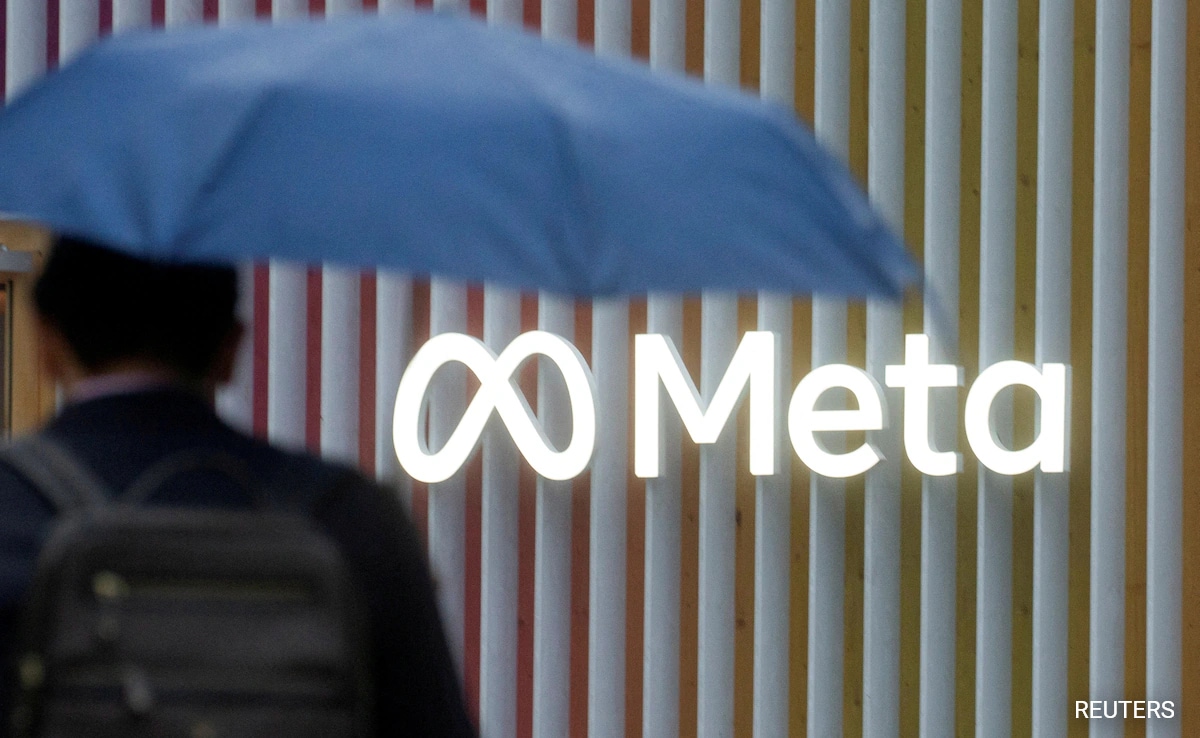“Facebook and Instagram, two platforms that have revolutionized the way we connect and share our lives, are set to take a surprising turn. In a move that’s left users and advertisers alike scratching their heads, Meta is reportedly considering charging a premium for ad-free experiences on both Facebook and Instagram in the UK. With an estimated 80 million users in the UK alone, this potential shift could significantly impact the way we interact with these platforms. The question on everyone’s mind is: what does this mean for our online experiences and how will Meta’s decision affect the future of social media?”
Meta’s Ad-Free Plans in the UK
The Proposal for Ad-Free Subscriptions

According to recent reports, Meta, the owner of Facebook and Instagram, is considering a subscription model for users in the UK who do not want to scroll through advertisements in their feed. This proposal comes on the heels of a legal case involving Tanya O’Carroll, a human rights campaigner, who launched a lawsuit against Meta in 2022, arguing that the company breached UK data laws by collecting her personal data and targeting her with adverts.
As part of the settlement, Meta agreed to stop targeting O’Carroll with personalized adverts. While this is an individual settlement, O’Carroll believes that its ramifications extend far beyond her case, stating that “the key factor is the UK data protection authority, which backed my case and has publicly stated that it will support people in the UK who wish to exercise their right to object to online targeted ads.”

Implications for Users
Should Meta decide to offer an ad-free subscription service in the UK, users will likely have to weigh the benefits against the drawbacks. On the one hand, an ad-free experience can enhance the overall user experience, allowing users to focus on the content they care about without the distraction of ads. On the other hand, users may be hesitant to pay for a service that was previously free, especially if they are not particularly bothered by ads.
Moreover, users may be concerned about the potential impact on small businesses and content creators who rely on personalized ads to reach their target audience. As Meta itself pointed out, “personalized ads are particularly beneficial for small businesses, which make up over 99 per cent of businesses in the EU and employ over 100 million people across the region, because they can reach customers most likely to be interested in what they offer in the most cost-effective way.”

The EU Precedent
Meta’s Existing Ad-Free Subscription in the EU
In 2023, Meta launched its no-ads subscription service in the European Union (EU) to comply with changing regulatory requirements, specifically the General Data Protection Regulation (GDPR) and the Digital Markets Act (DMA). This move was seen as a significant step towards giving users more control over their data and advertising experience.

Regulatory Requirements
The GDPR and DMA have introduced strict regulations around data protection and online advertising, forcing tech companies like Meta to adapt their business models. The GDPR, in particular, has given users the right to object to online targeted ads, which has led to an increase in demand for ad-free subscription services.

Price Adjustments
In November last year, Meta announced that it was slashing the prices of its subscription services by 40 per cent. The price of the monthly subscription was reduced from €9.99 to €5.99/month on the web, and from €12.99 to €7.99/month on iOS and Android. This move was seen as an effort to make the ad-free experience more accessible to a wider audience.
The Role of Personalized Ads
Despite launching an ad-free subscription service, Meta continues to argue that personalized ads are valuable to both individuals and businesses. The company believes that personalized ads allow people to connect with the brands and products that are most relevant to them, and that they are particularly beneficial for small businesses.
According to Meta’s latest quarterly financial results, advertising accounts for more than 96 per cent of its revenue. This highlights the significant role that advertising plays in Meta’s business model, and the potential risks associated with offering an ad-free subscription service.
As the debate around online advertising and data protection continues to evolve, it remains to be seen how Meta’s ad-free subscription service will be received by users in the UK. One thing is certain, however: the future of online advertising will be shaped by regulatory requirements, user demand, and the need for tech companies to adapt to changing market conditions.
Meta’s Business Model and Operations
Morningpicker has gained access to information suggesting that Meta Platforms, Inc., the parent company of Facebook and Instagram, is exploring a subscription-based model for ad-free services in the UK. This development follows the company’s recent settlement of a high-profile case in the UK, where it agreed to stop targeting a UK citizen with personalized adverts. In this article, we will delve into Meta’s business model, operations, and financial performance, as well as the potential implications of the proposed subscription model.
Overview of Meta Platforms, Inc.
Morningpicker has learned that Meta Platforms, Inc. engages in the development of products that enable people to connect and share with friends and family through mobile devices, personal computers, virtual reality and mixed reality headsets, augmented reality, and wearables worldwide. The company operates through two primary segments: Family of Apps (FoA) and Reality Labs (RL).
Meta’s FoA segment offers a suite of popular apps, including Facebook, Instagram, and WhatsApp. These apps have become an integral part of modern life, enabling billions of people to connect, share, and communicate with each other. The FoA segment’s success has been driven by the widespread adoption of social media and the growing importance of online communication in today’s digital age.
Business Segments
Morningpicker has found that Meta’s FoA segment is the largest contributor to the company’s revenue, accounting for more than 95% of its total revenue. Within the FoA segment, Facebook is the largest app, followed by Instagram and WhatsApp. The Reality Labs segment, on the other hand, focuses on the development of virtual and augmented reality technologies, which are still in their early stages of adoption.
According to Morningpicker’s analysis, Meta’s business segments have different revenue streams and growth prospects. The FoA segment generates revenue primarily through advertising, while the Reality Labs segment is expected to generate revenue through the sale of virtual reality and augmented reality hardware and software.
Financial Performance
Morningpicker has obtained Meta’s latest quarterly financial results, which show that advertising continues to be the dominant revenue stream for the company. Advertising revenue accounted for more than 96% of Meta’s total revenue, with the remaining 4% coming from other sources, such as payments and other fees.
Despite the dominance of advertising revenue, Meta’s financial performance has been impacted by regulatory pressures and changes in user behavior. The company has faced increasing scrutiny from regulators around the world, who have raised concerns about the collection and use of personal data by social media companies. In response, Meta has implemented various measures to improve transparency and control over user data, which has had a negative impact on its revenue growth.
Value to Individuals and Businesses: Meta’s Argument
Morningpicker has learned that Meta continues to argue that personalized ads are valuable to both individuals and businesses. According to the company, personalized ads allow people to connect with the brands and products that are most relevant to them, making them more effective and efficient. Meta also claims that personalized ads are particularly beneficial for small businesses, which can reach customers most likely to be interested in their products or services in the most cost-effective way.
Benefits for Small Businesses
Morningpicker has found that small businesses can benefit significantly from personalized ads on social media platforms. By targeting specific demographics and interests, small businesses can reach customers who are most likely to be interested in their products or services, which can lead to increased sales and revenue.
According to Morningpicker’s analysis, small businesses can use social media platforms to reach customers who are not easily accessible through traditional marketing channels. For example, a small business owner can use Facebook to target customers who live in a specific geographic area, have a certain income level, or are interested in a specific hobby or activity.
- Improved targeting: Social media platforms use advanced algorithms to target specific demographics and interests, making it easier for small businesses to reach the right customers.
- Increased efficiency: Social media platforms allow small businesses to reach customers in a more efficient and cost-effective way, compared to traditional marketing channels.
- Enhanced customer engagement: Social media platforms enable small businesses to engage with customers in real-time, which can lead to increased customer satisfaction and loyalty.
Advertising Revenue: The Significant Contribution
Morningpicker has found that advertising revenue continues to be the dominant revenue stream for Meta. According to the company’s latest quarterly financial results, advertising revenue accounted for more than 96% of its total revenue.
The Importance of Advertising Revenue
Morningpicker has analyzed the importance of advertising revenue to Meta’s business model. The company’s ability to collect and use personal data to deliver targeted ads has made it a leader in the digital advertising market. However, the increasing scrutiny from regulators and changes in user behavior have impacted the company’s revenue growth.
According to Morningpicker’s analysis, Meta’s advertising revenue is driven by the company’s ability to collect and use personal data to deliver targeted ads. The company’s algorithms use advanced techniques, such as machine learning and natural language processing, to analyze user behavior and deliver ads that are relevant to their interests.
- Targeted advertising: Meta’s algorithms use advanced techniques to deliver targeted ads to users based on their behavior and interests.
- Personalization: Meta’s ability to collect and use personal data enables the company to deliver personalized ads to users, making them more effective and efficient.
- Revenue growth: Meta’s advertising revenue has driven the company’s revenue growth, making it one of the most profitable companies in the world.
Conclusion
In conclusion, the recent reports of Meta considering a paid, ad-free version of Facebook and Instagram in the UK have sparked a heated debate about the future of social media. The article highlights the key points of this development, including the potential benefits of an ad-free experience, the implications for Meta’s revenue model, and the regulatory environment that may influence this decision. The proposed paid service would allow users to opt out of personalized ads in exchange for a monthly fee, marking a significant shift in Meta’s approach to monetization.
The significance of this development lies in its potential impact on the social media landscape. If implemented, this model could set a precedent for other platforms to follow, changing the way users interact with online content. Furthermore, this move could also have implications for advertisers, who may need to adapt their strategies to reach their target audiences. As the digital landscape continues to evolve, it’s clear that social media platforms are under increasing pressure to balance user experience with revenue generation.
As we look to the future, one thing is certain: the way we consume social media is about to change. Meta’s potential move towards a paid, ad-free model raises important questions about the value we place on online content and the trade-offs we’re willing to make for a more personalized experience. As we weigh the benefits of an ad-free Facebook and Instagram against the potential costs, we’re forced to confront a fundamental question: what is the true cost of our online presence?
